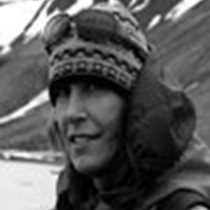Kelp Bay, Tenakee Arm
Today, Southeast Alaska revealed to us how changeable it can be. We woke in the still waters of Kelp Bay’s southern arm, cruising along in light rain. At the bay’s head, a green meadow looked like a perfect grazing spot for bears, but none were in view. But wait… a bear walked out from a low swale and sauntered across the grass, giving us a long look at its classic shoulder hump and scooped face. We watched as it came in and out of view, lumbering along, grazing.
The shores of Pond Island beckoned next. We walked across a muskeg to a beaver-made pond studded with bright yellow water lilies. Here, the bright pink bog laurel was in full bloom, unlike the spent plants of other muskegs we’ve explored this trip. We paddled kayaks over bat stars and sunflower stars (starfish, in other words). Eagles soared and chittered overhead. What’s more, the clouds lifted, the rain abated, and blue sucker-holes opened to clear skies.
We spent the afternoon cruising north in Chatham Strait, scanning the waters for marine mammals. A few Dall’s porpoises surfaced once in a while, their black-and-white dorsal fin and thick tail stock unmistakable. A few loons flew by and a few common murres floated by, but the seas were largely glassy. It was a gorgeous day to be searching, though, and search we did, embodying of the idea of wild patience as best we could. However, it wasn’t until near-evening that the day’s drama revealed itself.
In Tenakee Arm, we spotted a fireworks display of spouts. A group of twelve humpback whales were working together to herd herring in a method unique to Southeast Alaska: cooperative feeding. We dropped a hydrophone once we were close enough and had come to be able to better predict the whales’ patterns. The additional dimension of sound made an exponential difference in our understanding of what was going on. All listening were able to read the calling whale’s cry: here, here, HERE!! On the final, rising crescendo, the mass of animals burst through the water’s surface, spray flying, baleen exposed, rorqual pleats fully extended. No matter how many times you read about or watch documentaries about such behavior, there’s something about seeing it unedited that is beyond description. It’s the smell and sound and unpredictability of wildness. There’s nothing like it.
Today, Southeast Alaska revealed to us how changeable it can be. We woke in the still waters of Kelp Bay’s southern arm, cruising along in light rain. At the bay’s head, a green meadow looked like a perfect grazing spot for bears, but none were in view. But wait… a bear walked out from a low swale and sauntered across the grass, giving us a long look at its classic shoulder hump and scooped face. We watched as it came in and out of view, lumbering along, grazing.
The shores of Pond Island beckoned next. We walked across a muskeg to a beaver-made pond studded with bright yellow water lilies. Here, the bright pink bog laurel was in full bloom, unlike the spent plants of other muskegs we’ve explored this trip. We paddled kayaks over bat stars and sunflower stars (starfish, in other words). Eagles soared and chittered overhead. What’s more, the clouds lifted, the rain abated, and blue sucker-holes opened to clear skies.
We spent the afternoon cruising north in Chatham Strait, scanning the waters for marine mammals. A few Dall’s porpoises surfaced once in a while, their black-and-white dorsal fin and thick tail stock unmistakable. A few loons flew by and a few common murres floated by, but the seas were largely glassy. It was a gorgeous day to be searching, though, and search we did, embodying of the idea of wild patience as best we could. However, it wasn’t until near-evening that the day’s drama revealed itself.
In Tenakee Arm, we spotted a fireworks display of spouts. A group of twelve humpback whales were working together to herd herring in a method unique to Southeast Alaska: cooperative feeding. We dropped a hydrophone once we were close enough and had come to be able to better predict the whales’ patterns. The additional dimension of sound made an exponential difference in our understanding of what was going on. All listening were able to read the calling whale’s cry: here, here, HERE!! On the final, rising crescendo, the mass of animals burst through the water’s surface, spray flying, baleen exposed, rorqual pleats fully extended. No matter how many times you read about or watch documentaries about such behavior, there’s something about seeing it unedited that is beyond description. It’s the smell and sound and unpredictability of wildness. There’s nothing like it.


